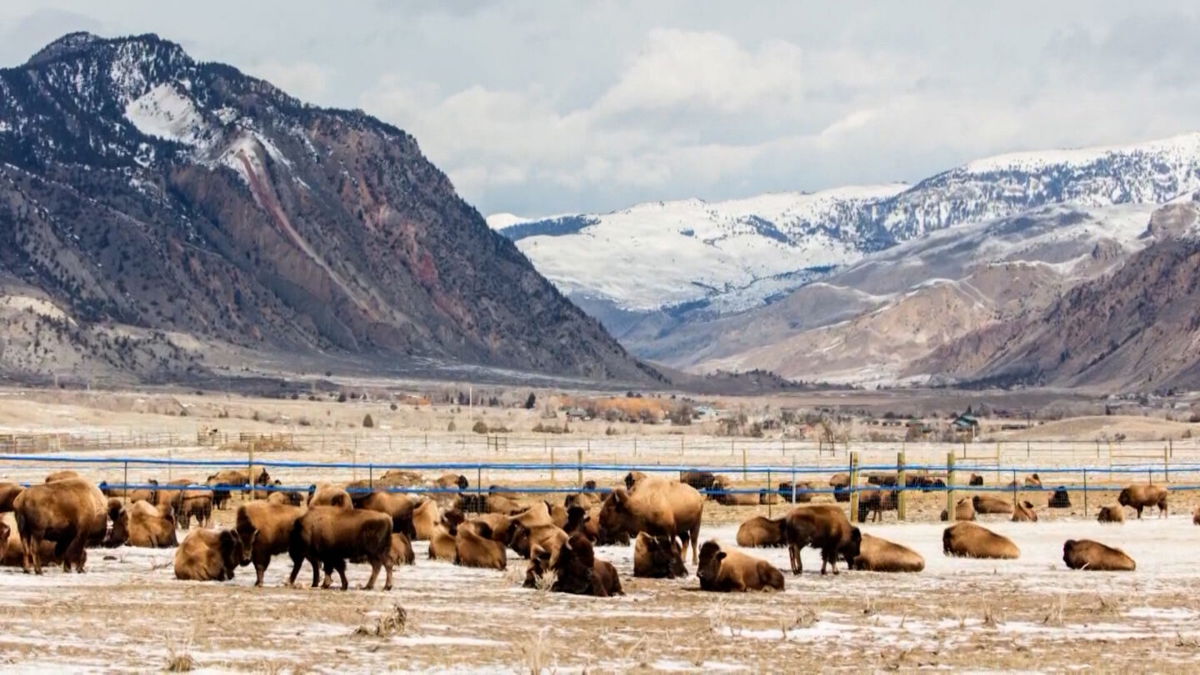Final Environmental Impact Statement for bison management at Yellowstone released

MAMMOTH HOT SPRINGS, Wyoming (KIFI) – The National Park Service (NPS) released the Final Environmental Impact Statement (FEIS) for a Bison Management Plan at Yellowstone National Park on June 6.
The FEIS presents a broad range of actions for managing bison inside the park. This plan allows the NPS to manage bison based on new scientific information and changed circumstances, explore ways to increase the transfer of bison to American Indian Tribes, and continue working closely with Tribal Nations and agency partners in management.
The purpose of the EIS is to preserve an ecologically sustainable population of wild and migratory bison while continuing to work with partners to address issues related to brucellosis transmission, human safety, property damage, and to fulfill Tribal trust responsibilities.
The FEIS solidifies the significant progress made over the past two decades by the Interagency Bison Management Plan (IBMP) partners and continues Yellowstone National Park’s commitment to the IBMP objectives which include: 1) maintain a wild, free-ranging bison population; 2) reduce the risk of brucellosis transmission from bison to cattle; 3) manage bison that leave Yellowstone National Park and enter the State of Montana; and 4) maintain Montana’s brucellosis-free status for domestic livestock.
The FEIS also considers the bison management actions likely to occur on lands outside the park in Montana, maintains NPS’s continued commitment to working with the State of Montana, Tribes, and other federal partners to balance bison management efforts, while acknowledging the NPS does not have jurisdiction or control over actions such as hunting or tolerance for bison beyond the park boundary.
The NPS’s FEIS considers alternatives to managing bison with varying population ranges and management activities. These include:
Alternative 1: The NPS would continue management of bison pursuant to the existing Interagency Bison Management Plan (IBMP), approved in 2000. This would maintain a population range of bison similar to the last two decades (3,500 to 5,000 bison after calving), continue hunt-trap coordination to balance population regulation in the park by using harvest and hunting opportunities outside the park, increase the number of brucellosis-free bison relocated to Tribal lands via the Bison Conservation Transfer Program, and work with the State of Montana to manage the already low risk of brucellosis spreading from bison to cattle.
Alternative 2-Preferred Alternative: Bison would be managed within a population range of about 3,500 to 6,000 animals after calving with an emphasis on using the Bison Conservation Transfer Program to restore bison to Tribal lands and Tribal treaty harvest, and public hunting outside the park to regulate numbers.
Alternative 3: The NPS would rely on natural selection, bison dispersal, and public and Tribal harvests in Montana as the primary tools to regulate numbers, which would likely range from 3,500 to 7,000 or more animals after calving.
On June 7, 2024, the Notice of Availability of the FEIS will publish in the Federal Register and initiates a 30-day wait-period. At the conclusion of the wait-period, the NPS will sign and publish a Record of Decision, detailing the selected action.
Find the FEIS and additional information here: https://parkplanning.nps.gov/YellowstonebisonEIS.
- www.nps.gov/yell -






